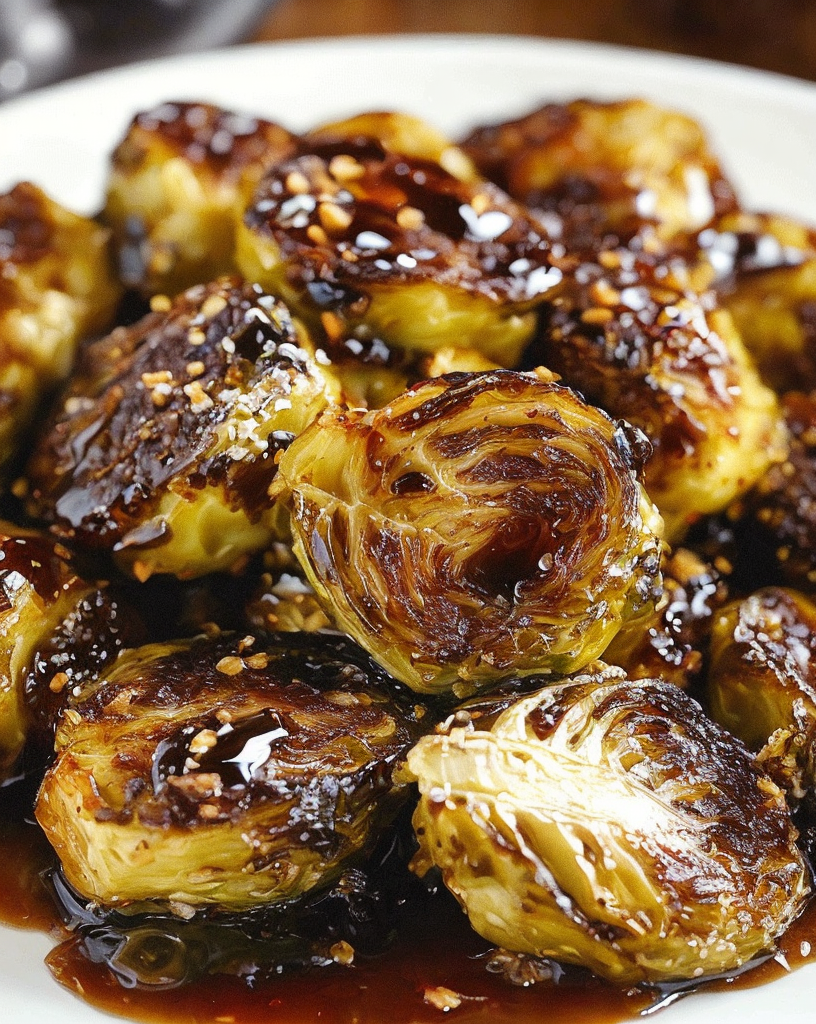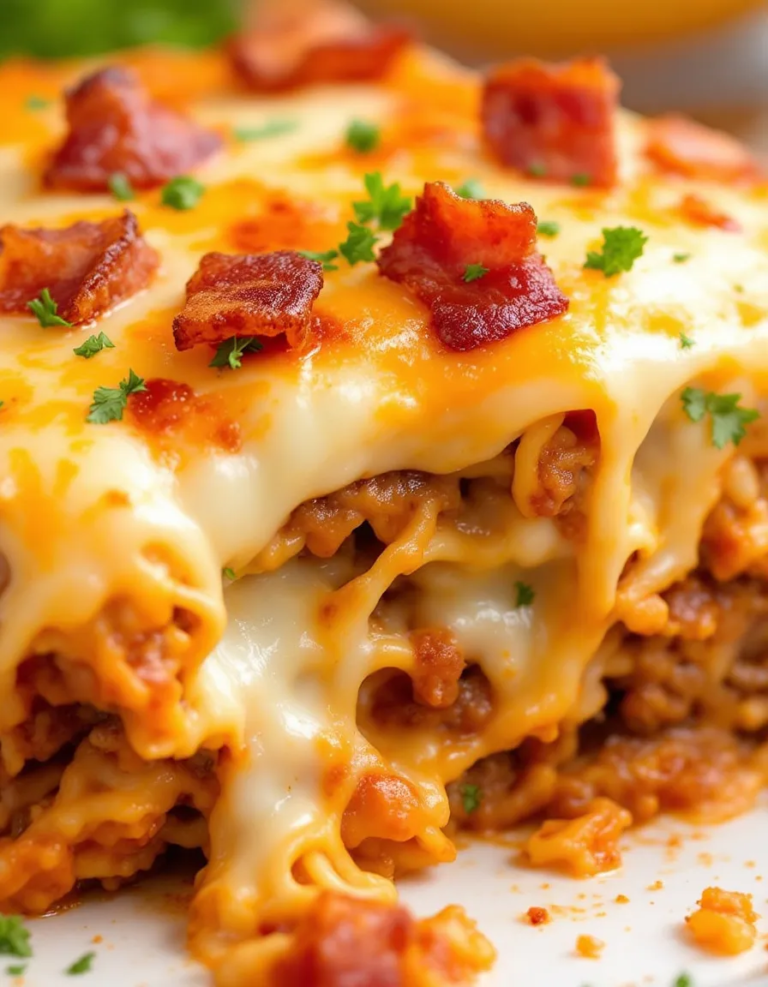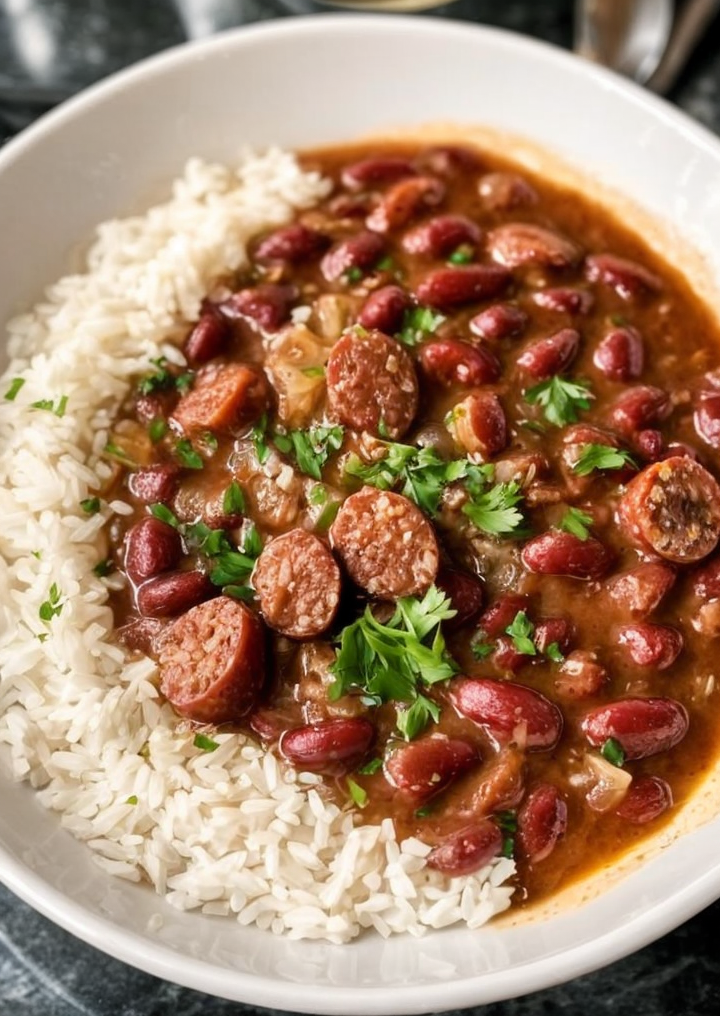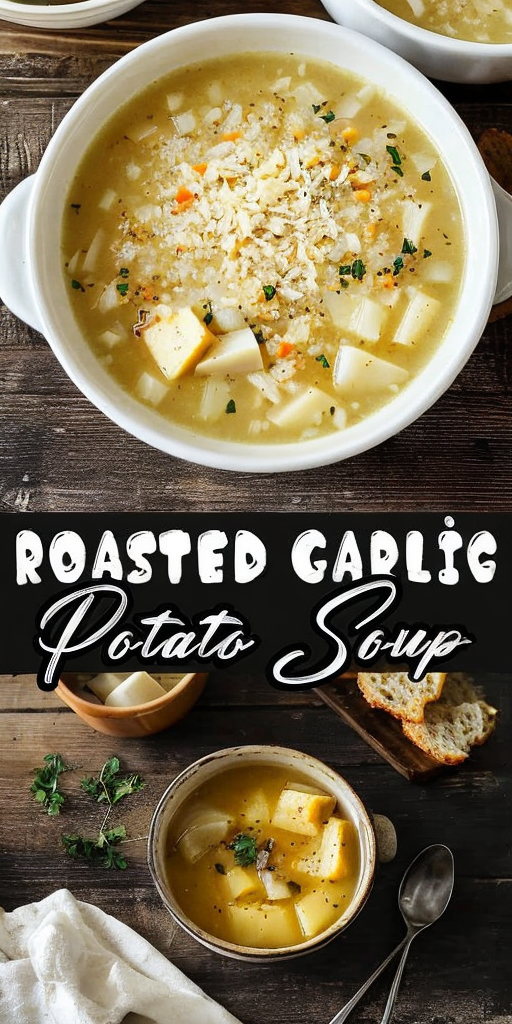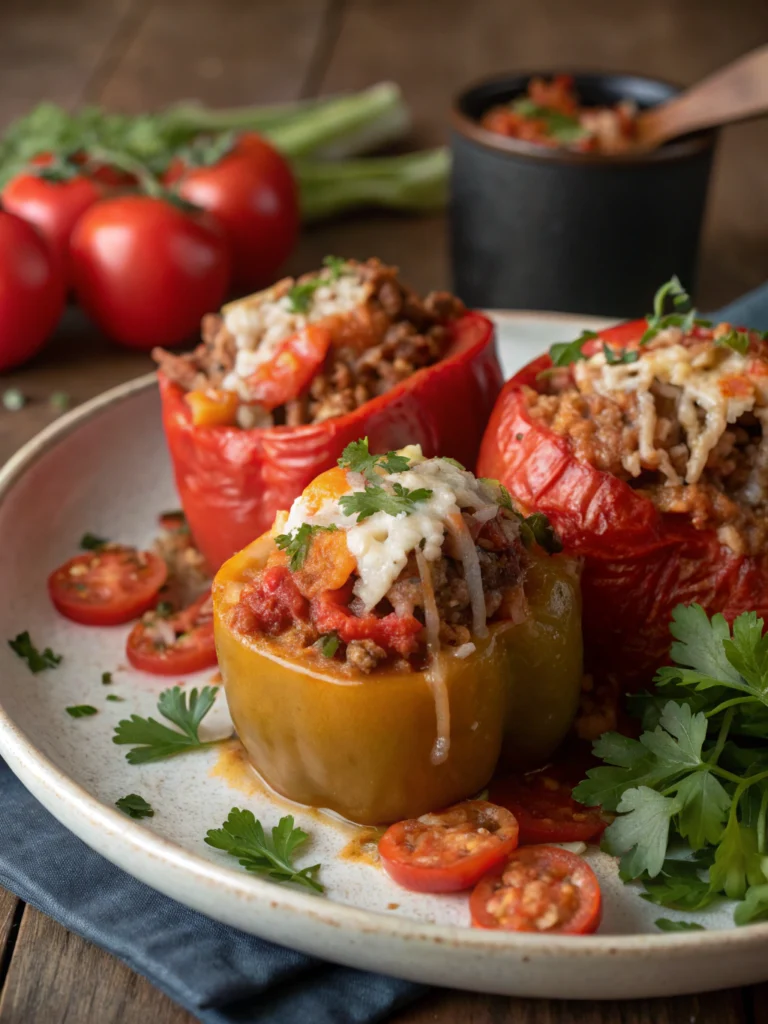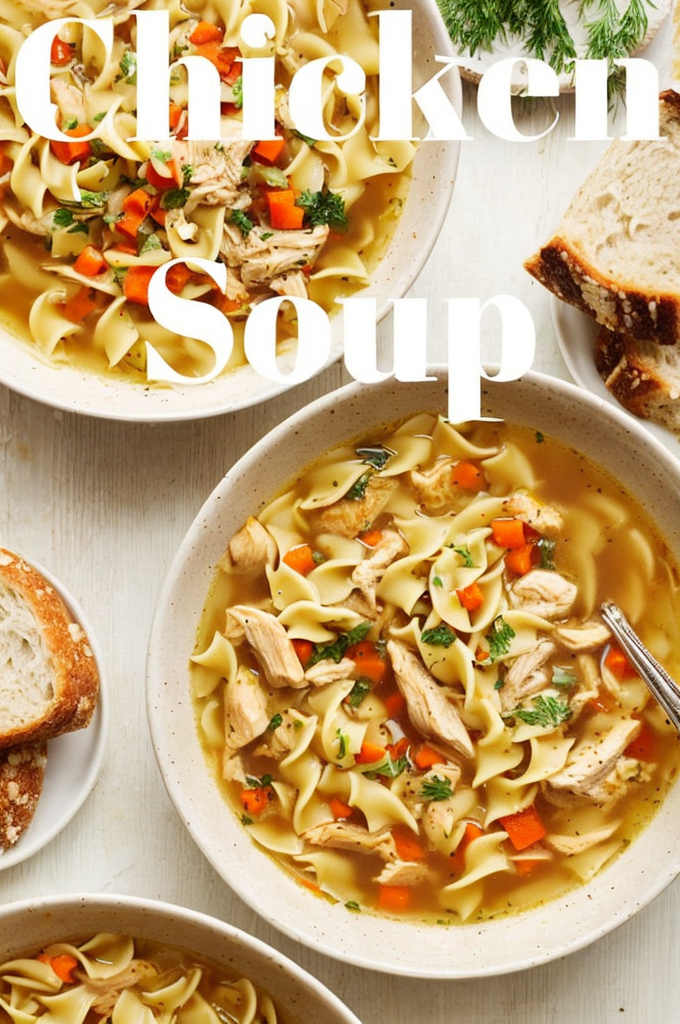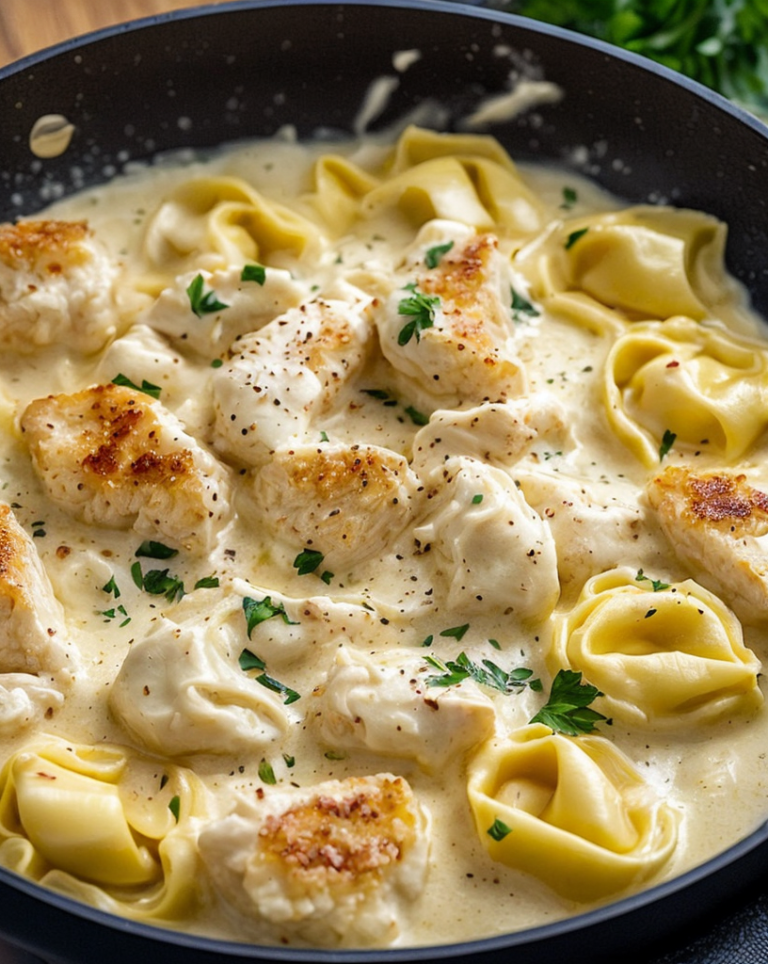Ultimate Honey Balsamic Brussels Sprouts Recipe Ready in 30 Minutes
Honey Balsamic Brussels Sprouts Recipe: A Sweet and Savory Delight
Brussels sprouts may often be misunderstood, but when you prepare them with honey and balsamic vinegar, they transform into a delightful dish that not only satisfies your taste buds but also adds a touch of elegance to your table. The Honey Balsamic Brussels Sprouts recipe marries the earthy flavors of these cruciferous veggies with a sweet glaze that caramelizes beautifully in the oven, instantly elevating them from a simple side dish to a standout component of any dinner.
Picture this: crisp-tender Brussels sprouts coated in a rich, sticky sauce, their slightly charred edges speaking volumes about the care put into their preparation. The combination of honey’s natural sweetness with the tangy depth of balsamic vinegar creates an irresistibly balanced flavor profile that is both comforting and sophisticated. Whether you’re serving them as a side dish for your holiday feast or as an everyday complement to any meal, these Brussels sprouts will leave everyone asking for seconds.
Quick Recipe Highlights
- Flavor Profile: This dish features a perfect balance of sweet and tangy, with the honey bringing warmth and richness while the balsamic adds a delightful acidity that cuts through the natural bitterness of Brussels sprouts.
- Texture: Expect a wonderful contrast between the caramelized, crispy outer leaves and the soft, tender insides of the Brussels sprouts. Each bite offers a satisfying crunch followed by a melt-in-your-mouth experience.
- Aroma: The aroma of roasted Brussels sprouts mingling with the sweet scent of honey and the sharpness of balsamic vinegar creates an inviting and aromatic experience that fills your kitchen.
- Visual Appeal: The vibrant green of the Brussels sprouts, enhanced by the glossy glaze of honey and balsamic, presents a stunning dish that is sure to impress at any dinner table.
- Skill Level Needed: This recipe is easy enough for beginners, requiring minimal skills, making it accessible for anyone looking to impress with a delicious side dish.
- Special Equipment: You will need a large baking sheet and parchment paper for even roasting and easy cleanup.
Recipe Overview
- Difficulty Level: The Honey Balsamic Brussels Sprouts recipe is categorized as easy, making it a fantastic choice for novice cooks or anyone looking for a quick and impressive side dish.
- Category: This recipe fits perfectly within the vegetable side dish category, complementing mains like roasted meats or vegetarian entrees.
- Cuisine: It draws inspiration from classic Italian flavor pairings, where balsamic vinegar is a staple, marrying beautifully with seasonal vegetables to create hearty, flavorful dishes.
- Cost: This dish is budget-friendly, with Brussels sprouts being a readily available vegetable, and pantry staples like honey and balsamic vinegar keeping the overall cost down.
- Season: Brussels sprouts shine in the fall and winter months when they are in season, providing a robust, nutritious option for hearty, seasonal meals.
- Occasion: Perfect for holiday gatherings, family dinners, or casual weeknight meals, this recipe adapts seamlessly to any occasion.
Why You’ll Love This Recipe
Indulging in the Honey Balsamic Brussels Sprouts means savoring a culinary treat that’s both tasty and nutritious. The balance of flavors makes it a dish that appeals to both children and adults alike, often converting Brussels sprouts skeptics into fans. With their crispiness and succulent glaze, they seamlessly merge comfort food with health-conscious eating.
This recipe takes mere minutes to prepare, leaving you with more time to enjoy with your family or friends. The straightforward steps make it easy to incorporate into busy weeknight dinners or elaborate holiday feasts, and with a simple roasting technique, your oven does most of the work while you prepare the rest of your meal.
Nutritionally, Brussels sprouts are packed with vitamins C and K, offering a nutrient-dense side that adds significant health benefits to your meals. When you add honey, you provide a natural energy boost without the guilt of processed sugars, making this dish as healthy as it is delicious.
Beyond the kitchen, serving Honey Balsamic Brussels Sprouts can quickly elevate your hosting game. Their vibrant colors and sophisticated flavor make them the ideal dish for sharing with guests, allowing for conversations around the table while they enjoy a dish that’s undeniably pleasing to the palate.
Lastly, this recipe is efficient in terms of cost. With minimal and easily obtainable ingredients, you can prepare a stunning vegetable side that doesn’t break the bank, making it a wise choice for those looking to stretch their grocery budget while maximizing flavor.
Historical Background and Cultural Significance
The history of Brussels sprouts dates back to ancient Rome, where they were cultivated in various forms. By the 16th century, they gained popularity in Belgium, leading to their name, which is derived from Brussels, the capital of Belgium. Historically, they were marginalized due to their strong taste and smell, but with time, especially in recent culinary adventures, they’ve made a remarkable comeback.
Cultural significance is evident, as various regions embrace Brussels sprouts with local flavors. For instance, in Britain, they often play a central role during Christmas dinners, symbolizing hearty, comforting meals shared with family. Their revival in modern cuisine showcases the adaptability of this vegetable, which can be roasted, sautéed, or even incorporated into salads, showcasing its versatility.
The evolution of Brussels sprouts recipes has been notable, especially with the influence of various cooking styles. The trend of roasting vegetables has made Brussels sprouts more appealing, complemented by diverse flavors like honey and balsamic vinegar, transforming them from a winter staple into a gourmet delight.
Regional variations of Brussels sprouts dishes include those dressed with cheese in French cuisines or mixed with nuts and spices in holiday menus across Western cultures. Their adaptability signifies their importance in modern gastronomy, bridging traditional methods with contemporary flavors.
Ingredient Deep Dive
Brussels Sprouts
Brussels sprouts are a member of the cruciferous vegetable family, which also includes cabbage, broccoli, and cauliflower. Historically significant in various cultures for their resilience and nutrient profile, they have been cultivated for centuries. Nutritionally, they are low in calories but high in dietary fiber, vitamins C and K, and several antioxidants.
When selecting Brussels sprouts, look for firm, bright green heads with tightly packed leaves. Avoid sprouted or yellowing leaves, as this suggests overripeness. Store them in a plastic bag in the refrigerator to maintain freshness, and for substitution, consider broccoli, though the cooking times will differ.
Balsamic Vinegar
Originating from Italy, balsamic vinegar has a rich history, utilized since the Middle Ages. It is made from reduced grape must and has a complex flavor profile that enhances various dishes. Balsamic vinegar is known for its health benefits, including its ability to support heart health and provide antioxidants.
When purchasing balsamic vinegar, opt for high-quality traditional varieties that are thicker and more syrupy, which will give your dish a richer flavor. Store it in a cool, dark place to maintain its integrity. If needed, substitute with red wine vinegar, but note that it may alter the sweet and tangy balance.
Honey
Honey has been cherished since ancient times for its sweetness and medicinal properties, often used in various cultural practices around the world. This natural sweetener offers a host of health benefits, including antibacterial properties and antioxidants that support overall health.
When choosing honey, opt for raw, organic varieties that retain the utmost nutritional content. Store it in a sealed container at room temperature, away from direct sunlight to maintain its quality. For a vegan alternative, pure maple syrup can be used, although it will impart a distinct flavor.
Common Mistakes to Avoid
- Overcooking the Brussels sprouts: Keep an eye on the sprouts while roasting; overcooking can lead to mushiness and a pungent flavor. Aim for a golden-brown color for that perfect tenderness.
- Not trimming the ends: Always trim the stem ends of the Brussels sprouts to help them cook evenly and reduce bitterness. Leaving them untrimmed may lead to stringy bits that detract from the dish.
- Skipping the soaking: If you’re using frozen Brussels sprouts, be sure to thaw them completely and soak them in cold water. It helps reduce the bitterness and improves the overall flavor.
- Using too much honey: Adding excessive honey will overpower the dish and result in an overly sweet flavor. Stick to the measured amount for a balanced taste.
- Not preheating the oven: Ensure your oven is preheated before placing the Brussels sprouts in. A hot environment promotes the caramelization process, enhancing flavor.
- Piling too many sprouts: Spread the Brussels sprouts evenly on the baking sheet to ensure they roast rather than steam. Overcrowding leads to uneven cooking.
- Omitting seasoning: Always season your Brussels sprouts with salt and pepper for taste. Proper seasoning complements the honey and balsamic glaze.
- Using low-quality balsamic vinegar: A high-quality balsamic will elevate the dish. Cheaper varieties may lack the depth needed for the sweet and savory balance.
- Ignoring the visual cues: Trust your senses; look for that nice golden-brown hue on the Brussels sprouts, which indicates that they are perfectly roasted.
- Not letting the sprouts rest: After removing from the oven, allow the sprouts to rest for a few minutes before serving. This helps the glaze set slightly and enhances flavors.
Essential Techniques
Trimming Brussels Sprouts
Trimming Brussels sprouts is one of the key steps in preparing this dish, as it not only improves the presentation but also helps them cook evenly. To master this technique, use a sharp knife to slice off the stem end and remove any outer leaves that appear yellow. The visual cue for success is seeing a fresh, bright green head with tight leaves, which indicates the sprouts are at their best. Common pitfalls include being too aggressive and disfiguring the sprouts, so practice gentle trimming for perfection.
Roasting
Roasting is the most vital technique in this recipe, enhancing the natural flavors through caramelization. Preheat the oven to 400°F (200°C) for best results. Spread Brussels sprouts in a single layer to ensure they roast rather than steam. Look for a golden-brown color and a crisp texture as indicators of readiness. The most common pitfall in roasting is overcrowding the baking sheet, which will lead to steaming rather than roasting. Ensure plenty of space between each sprout.
Making the Glaze
Creating the honey-balsamic glaze is what makes this dish sing. Combine equal parts honey and balsamic vinegar in a small bowl with a pinch of salt. This mixture will caramelize beautifully when roasted. A crucial point to note is to drizzle the glaze over the sprouts halfway through cooking to enhance flavor without burning it on the pan. Look for a glossy finish on the Brussels sprouts to confirm the glaze has melded perfectly.
Pro Tips for Perfect Honey Balsamic Brussels Sprouts
Use fresh Brussels sprouts for the best flavor and texture. Choose sprouts that are smooth, firm, and free from blemishes. Frozen Brussels sprouts can be convenient, but they often result in a mushier texture.
Avoid the temptation to skip the honey! This ingredient is essential for achieving that perfect sweet and tangy balance. If you’re looking for a healthier option, opt for a lighter honey or use agave syrup, but be cautious of the overall sweetness.
Experiment with flavors by adding garlic or red pepper flakes to the roasting process, which can enhance the taste profile. These additions will add depth and complexity, perfect for those who enjoy a flavor explosion.
Consider garnishing your finished dish with toasted nuts or seeds to provide additional crunch and nutritional benefits. Chopped almonds or pine nuts complement the Brussels sprouts beautifully.
Let the dish cool slightly before serving. Allowing it to rest helps to let the flavors meld together even more, resulting in a vibrant presentation that looks equally delicious.
For a more robust flavor, try incorporating a dash of soy sauce or Worcestershire sauce into the glaze. These options will introduce a new dimension that melds exceptionally well with honey and balsamic.
Don’t forget to serve freshly cracked black pepper over the sprouts before serving. A sprinkle of black pepper not only adds visual appeal but also enhances the overall flavor.
Variations and Adaptations
For those wanting to explore regional variations, try incorporating traditional flavors such as pancetta or bacon in the roasting process to add richness. This addition is a nod to classic Italian fare, further enhancing the dish’s savory notes.
Seasonal adaptations also apply; in the spring, consider tossing in fresh herbs like thyme or rosemary to complement the honey-balsamic flavor. These herbs will brighten the dish and provide an aromatic experience perfect for a spring gathering.
Dietary modifications can be easily achieved by substituting honey with agave or maple syrup for vegan options. Additionally, keeping the dish gluten-free is straightforward, as all primary ingredients fall under that category.
Flavor variations could also include infusing the balsamic vinegar with different fruits, such as fig or raspberry, to create a unique twist on the standard recipe. This would add a fruity note that’s ideal for guests looking for something different.
Texture modifications can also enhance the recipe; consider incorporating nuts for added crunch or serving alongside a creamy dip to create an intriguing contrast. This approach lends itself well to casual entertaining, where finger foods are the norm.
As far as presentation alternatives go, try serving the Brussels sprouts on skewers for a fun party appetizer. This not only adds visual interest but also makes them easy to eat.
Serving and Presentation Guide
Plating techniques for Honey Balsamic Brussels Sprouts can vary, but a simple method of arranging them in a circular formation on a large white platter provides a striking contrast that enhances the colors of the dish.
Consider garnishing with fresh herbs or a sprinkle of pomegranate seeds for both color and flavor. Pomegranate seeds add a burst of acidity that nicely balances the sweetness of the honey and the tang of the balsamic.
Traditional accompaniments include roasted meats, which pair excellently with the sweet notes of the Brussels sprouts. Easier side dishes, such as creamy mashed potatoes or a simple salad, also create a substantial plate.
Modern serving suggestions might include mini portions served in small bowls for a refined touch during a dinner party. Serving in individual dishes also creates beautiful place settings for guests.
Temperature considerations are key; while they can be enjoyed warm, allowing them to cool slightly before serving enhances the flavor, as the balsamic glaze thickens and clings to the sprouts more effectively.
For portion control, consider serving family-style where everyone can help themselves. This approach creates a relaxed dining environment and allows guests to indulge in their preferred amount.
Wine and Beverage Pairing
For an exceptional dining experience, consider pairing Honey Balsamic Brussels Sprouts with a crisp white wine like Sauvignon Blanc. The acidity in the wine compliments the tangy notes of the balsamic glaze beautifully.
For red wine enthusiasts, a light Pinot Noir can work wonders alongside the dish, harmonizing with the sweetness of the honey while balancing the savory flavors of the Brussels sprouts.
Non-alcoholic alternatives include sparkling water with a slice of lemon or a refreshing iced tea, which will cleanse the palate between bites without overpowering the dish.
If you prefer coffee or tea, a mild green tea or herbal blend can serve as a wonderful accompaniment, offering a light touch to contrast the savory richness of the roasted vegetables.
When serving, ensure that beverages are at the appropriate temperature; white wines should be chilled, while reds are best served slightly warmer than room temperature.
Storage and Shelf Life
Proper storage methods for Honey Balsamic Brussels Sprouts are crucial to maintaining quality. Allow leftovers to cool completely before transferring them to an airtight container.
Refrigerate for up to 3-4 days, making sure to consume promptly to prevent spoilage. Signs of spoilage include an off smell or slimy texture; discard any sprouts that exhibit these characteristics.
For reheating, storing in the oven will retain the crispiness of the dish; a quick bake at 350°F (175°C) for about 10 minutes should suffice. Microwaving can result in a mushy texture, so it’s best avoided.
Freezing is not recommended for this dish, as it often results in a loss of texture and flavor. The sprouts may become soggy upon thawing, undermining the intended culinary experience.
Make Ahead Strategies
To make the Honey Balsamic Brussels Sprouts ahead of time, prepare the Brussels sprouts and coat them in the honey-balsamic glaze. Store them in the refrigerator for up to one day before roasting.
This make-ahead strategy allows for flavors to infuse while saving you valuable time on the day of serving.
Quality is maintained provided they are kept chilled, and remember to roast them right before serving for the best texture and flavor.
For assembly, ensure you give them a good toss just before roasting to evenly distribute the glaze. Reheating previously roasted Brussels sprouts may result in uneven texture, so this tactical approach ensures a fresh and crispy outcome.
Introducing fresh additions like a sprinkle of lemon juice just before serving can elevate the dish and refresh its flavor. This method adds a touch of brightness while keeping it seasonal.
Scaling Instructions
Scaling the Honey Balsamic Brussels Sprouts recipe is simple; for halving, cut ingredients directly in half, ensuring you maintain the same techniques to achieve consistent flavor and texture.
When doubling or tripling the recipe, use larger baking sheets to accommodate additional sprouts without overcrowding, crucial for achieving that desired roast.
Adjustments may also be needed for cooking times; larger batches may require slightly longer roasting time, so check frequently for doneness.
Equipment adjustments entail using multiple baking sheets if necessary, spacing them out in the oven to ensure even cooking.
For storage considerations, consider using several smaller containers for easy access to leftovers, making it more convenient to reheat portions as needed.
Nutritional Deep Dive
The nutritional profile of Honey Balsamic Brussels Sprouts is impressive. Each serving is rich in dietary fiber and essential vitamins, particularly vitamin C and K, which offer numerous health benefits to support well-being.
A macro breakdown reveals that they are low in calories but high in healthy carbohydrates from the vegetables. The sweetness from honey adds a bit of sugar, but it is offset by the nutritional content of the sprouts.
Micronutrient analysis shows their abundance in antioxidants, which are vital for fighting inflammation and promoting overall health. Including these sprouts as a side dish can enhance diet diversity and nutrient intake.
Health benefits also include supporting bone health, boosting the immune system, and aiding digestion. Their high fiber content is beneficial for heart health and weight management.
Dietary considerations are minimal, as this dish is naturally gluten-free and can be adapted for various diets, making it a versatile option for many households.
Portion analysis suggests that a standard serving size of about one cup is an excellent benchmark for health-conscious diners, offering an appropriate balance of calories and nutrients.
Dietary Adaptations
For gluten-free adjustments, this recipe is already suitable as it contains no gluten-containing ingredients. However, be cautious with pre-made balsamic vinegar that may contain additives or gluten.
Dairy-free versions are achievable without any modifications, allowing those who avoid dairy to enjoy the dish freely.
For vegan adaptations, replacing honey with agave syrup or maple syrup ensures everyone can enjoy the dish while adhering to their dietary preferences.
Low-carb eaters can enjoy this dish without significant alterations, as Brussels sprouts are lower in carbohydrates compared to other vegetables.
Keto fans can incorporate these sprouts by simply adjusting portion sizes and enjoying moderate servings while focusing on overall meal composition.
Paleo dieters find this recipe friendly as it aligns perfectly with the emphasis on whole foods.
For individuals following a low-FODMAP diet, moderation is key. It’s advisable to stick to smaller portions while enjoying the flavors.
The Recipe
Honey Balsamic Brussels Sprouts
Serves: 4
Prep Time: 10 mins
Cook Time: 25 mins
Total Time: 35 mins
Kitchen Equipment Needed
- Large baking sheet
- Parchment paper
- Sharp knife
- Bowl for mixing
- Measuring spoons
Ingredients
- 1.5 pounds Brussels sprouts, trimmed and halved
- 3 tablespoons balsamic vinegar
- 2 tablespoons honey
- 2 tablespoons olive oil
- Salt and pepper to taste
- Optional: chopped fresh parsley for garnish
Directions
- Preheat your oven to 400°F (200°C) and line a baking sheet with parchment paper.
- In a large bowl, combine the Brussels sprouts, olive oil, balsamic vinegar, honey, salt, and pepper. Toss until the sprouts are evenly coated.
- Spread the Brussels sprouts on the prepared baking sheet, making sure they are in a single layer.
- Roast for 25 minutes, until golden brown, tossing halfway through for even caramelization.
- Remove from the oven, toss again with any accumulated glaze, and garnish with parsley if desired.
- Serve warm and enjoy!
Recipe Notes
- For a spicier kick, add red pepper flakes to the balsamic mixture.
- Leftovers can be stored in an airtight container in the fridge for up to 3-4 days.
- Great as a side dish or even as a topping for salads or grain bowls.
Troubleshooting Guide
When faced with texture issues, such as mushiness, ensure that you are not overcrowding the pan during roasting. An even layer allows for proper caramelization.
Flavor balance can be tricky if the dish tastes too sweet or too tangy. To counteract sweetness, adding a pinch of salt can elevate the flavors. In contrast, adding a bit more honey will soften overly tangy notes.
Temperature problems can arise; if your sprouts are overly golden before the required cooking time, lower the heat. Conversely, if they are not browning enough, raise the oven temperature slightly.
Equipment challenges may occur when using older ovens. Therefore, keep an oven thermometer handy to confirm you’re at the right temperature throughout cooking.
If your ingredient substitutions don’t yield the expected results, be prepared for varied cooking times. For example, thawed frozen Brussels sprouts may require less time than fresh ones.
Timing concerns often affect the final product. Keep track of time and adjust your other dishes accordingly, ensuring everything fits seamlessly into your meal schedule.
Recipe Success Stories
Enthusiastic community feedback often highlights the transformation of Brussels sprouts from a dreaded vegetable to a family favorite when roasted with honey and balsamic.
Many readers share their variations, such as adding bacon or changing the glaze with different vinegars and syrups, which have resulted in delightful successes celebrated at gatherings.
Adaptation stories frequently recount how the dish became a staple at holiday dinners, cherished by friends and family alike, showcasing its ability to bring people to the table.
Photography tips shared among cooks emphasize capturing the vibrant hues of the roasted sprouts against the rich, sticky glaze, creating a visually appealing dish that speaks to its deliciousness.
Continuous community engagement around this recipe fosters creativity, leading participants to contribute their twists and secrets, building a collective legacy of enjoyable cooking experiences centered on these delightful Brussels sprouts.
Frequently Asked Questions
Can I use frozen Brussels sprouts for this recipe?
Yes, you can use frozen Brussels sprouts, but it is essential to thaw them thoroughly and pat them dry to avoid excess moisture. Cooking times may vary, so keep an eye on them while roasting.
How do I make this dish ahead of time?
You can prepare the honey-balsamic glaze and trim the Brussels sprouts in advance. Store them in the refrigerator and roast them just before serving for the best taste and texture.
What can I serve with Honey Balsamic Brussels Sprouts?
This dish pairs well with roasted meats, such as chicken or pork, and works beautifully with vegetarian options like quinoa or lentils for a balanced meal.
Can I use different sweeteners?
Absolutely! You can substitute honey with maple syrup or agave nectar. Each will bring a unique flavor, enhancing the dish while maintaining its sweetness.
Why are my Brussels sprouts soggy?
Soggy Brussels sprouts are often the result of overcrowding the baking sheet. Make sure there is enough space between them to allow for proper roasting and caramelization.
How do I know when the Brussels sprouts are done?
The Brussels sprouts should be golden brown on the edges and tender when pierced with a fork. Look for a nice caramelized exterior to ensure they are cooked properly.
Can I add other vegetables?
Yes, you can incorporate other vegetables like carrots or sweet potatoes into the mix. Just keep in mind that cooking times may vary depending on the vegetable added.
What type of balsamic vinegar is best?
A high-quality, aged balsamic vinegar is preferable for its richer, sweeter flavor. Avoid cheap, mass-produced varieties, as they often lack depth and complexity.
Is this recipe vegan?
You can easily make this recipe vegan by substituting the honey for a vegan sweetener like agave syrup or maple syrup, ensuring everyone can enjoy it.
How long will leftovers keep?
Leftover Honey Balsamic Brussels Sprouts can be stored in an airtight container in the refrigerator for up to 4 days. Reheat them in the oven for best results.
Additional Resources
Explore additional recipes that complement this Honey Balsamic Brussels Sprouts dish, such as a creamy garlic mashed potato or a zesty quinoa salad. These dishes provide a wonderful contrast and balance to the roasted sprouts.
Dive deep into technique guides that focus on broader vegetable roasting tips and tricks, enhancing your culinary skills and expanding your repertoire of side dishes.
Ingredient information detailing seasonal produce will help you select the freshest vegetables for this dish, maximizing flavor and nutritional content throughout the year.
Equipment recommendations for tools such as quality sheet pans can significantly impact the roasting process, ensuring evenly cooked and perfectly caramelized vegetables.
Sorting through seasonal variations can guide adaptations according to what’s available at your local market, encouraging creativity in your meal planning.
Join the Conversation
Get involved with the community by sharing your photos of your attempts at the Honey Balsamic Brussels Sprouts recipe on social media. Recipes become even more fun when enjoyed and shared among friends and family.
Engage with others by offering feedback and photography tips. The community thrives on shared stories and adaptations that can inspire others to recreate this delightful meal.
Join discussions on blog comment sections, where you can share your twists on the recipe, swap tips, and refine techniques based on collective experiences with this dish.
Invite readers to contribute their unique takes, fostering a vibrant conversation around how this recipe can be adapted to fit various tastes and preferences.
Your experiences and modifications may serve as inspiration for others looking to explore new culinary horizons with Honey Balsamic Brussels Sprouts!

